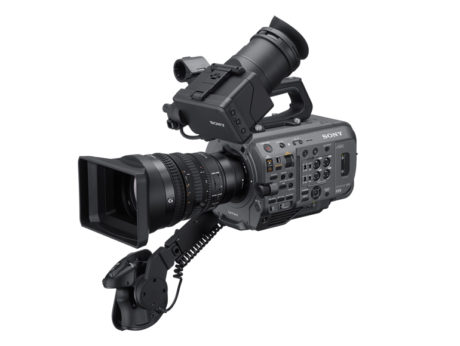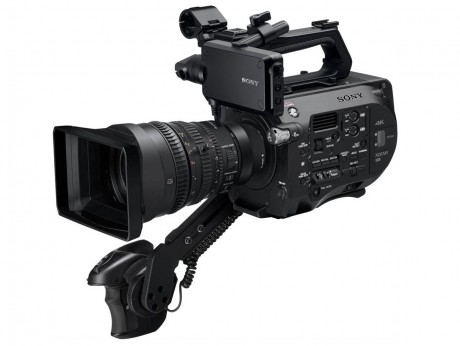Sony FX9 vs FS7
What’s the difference?
In this article we highlight the main differences between these 2 great Sony cameras. The FX9 and FS7
To learn more about Shift 4’s other kit, subscribe to our YouTube channel for lens tests, instructional videos, equipment reviews and S4 Shorts.
| Sony FX9 | Sony FS7 | |
|---|---|---|
 |  |
|
| SENSOR | 6K Full Frame CMOS Can crop to 5K FF and 4K S35 | 4K S35 CMOS Can crop to 2K S16 |
| RECORD RESOLUTIONS | 4K DCI (4096 x 2160) 4K UHD (3840 x 2160) HD (1920 x 1080) | 4K DCI (4096 x 2160) 4K UHD (3840 x 2160) HD (1920 x 1080) |
| CODECS | XAVC I (4:2:2-10bit) XAVC L (4:2:2-10bit) Mpeg 2 (4:2:2-8bit) - (HD only) | XAVC I (4:2:2-10bit) XAVC L (4:2:2-10bit) Mpeg 2 (4:2:2-8bit) - (HD only) With Extension Unit 👇 ProRes 422HQ (4:2:2-10bit) - (HD only) ProRes 422 (4:2:2-10bit) - (HD only) ProRes 422LT (4:2:2-10bit) - (HD only) |
| RECORD TIMES (128Gb XQD Cards at 25p) | 4K XAVC-I - 60mins 4K XAVC-L - 2hr 32mins HD XAVC-I - 2hr 8mins HD XAVC-L 50 - 4hr 44mins HD XAVC-L 35 - 6hr 30mins | 4K XAVC-I - 60mins 4K XAVC-L - 2hr 32mins HD XAVC-I - 2hr 8mins HD XAVC-L 50 - 4hr 44mins HD XAVC-L 35 - 6hr 30mins HD ProRes 422HQ - 1hr 16mins HD ProRes 422 - 1hr 52mins |
| FRAME RATES | 1-30 fps (S: FF-6K | R: 4K DCI/UHD)* 1-60 fps (S: FF-5K | R: 4K DCI/UHD)* 1-60 fps (S: FF-6K | R: HD)* 100, 120 fps (S: FF-2K | R: HD)* 1-30 fps (S: S35-4K | R: 4K DCI/UHD)* 1-60 fps (S: S35-4K | R: HD)* 100, 120 fps (S: S35-2K | R: HD)* | 1-60 fps (S: S35-4K | R: 4K DCI/UHD)* 1-60 fps (S: S35-2K/S16-2K | R: HD) * 72-150 fps (S: S35-2K/S16-2K | R: HD)* |
| BASE ISO | Dual ISO 800 and 4000 | 2000 |
| TIMECODE / GENLOCK | On Camera Body | Rear Extension Unit Required |
*S = Sensor Mode | R = Recording Resolution
Auto Focus
When using certain E mount lenses with the FX9, continuous autofocus options become available. Including setting the speed and sensitivity of focus pulls as well as face and eye recognition that can detect multiple people at once. The FX9 also allows the selection of focus areas by using the viewfinder’s touch screen function.
Picture Settings
Most users of the FS7 prefer using S-log 3 and grading or burning in a low contrast LUT to produce subtler highlights and colours than the standard rec709 shooting mode. A big trade up with this mode is you are fixed to 3 preset white balances (3200, 4300 and 5500k) so provides reduced control of the image.
The FX9 allows full white balance control in Cine EI mode with Slog 3 but also offers the new S-Cinetone look in custom mode. This is based on the filmic LUT provided in the Venice but burnt straight into the image. So no need for a grade or complicated LUT setups, just great highlight control and subtle filmic colours straight out of the box.
EF Mount Adaptors
In order to achieve a full frame look on the FS7 (which has a S35 sensor), you will need to place a Speedboost Metabones adaptor between the camera body and the lens, but this will cause a slight degradation in image quality. And if you want to use a lens designed for S35, then you need to swap the adaptor to a non Speedboost.
With the FX9 you only need one Metabones adaptor and won’t have any image degradation, this is because its 6K FF sensor can be cropped to S35 (equivalent of the FS7 MkII) but still maintain 4K quality.
The Similarities
A lot of the great features of the FS7 MkII has been brought forward to the FX9, including:
• Variable ND filter from 0.6 – 1.8
• General body design and viewfinder are the same complete with smart handle
• They can both record HD and 4K in XAVC I 422 10bit codec
• Both record to affordable XQD cards
• Both cameras have the highly versatile E-mount lens mount, which can be easily adapted to EF and PL mount
Friday, October 16th, 2020
Tags
- Sony (10)
- Full Frame (4)
- Super35 (6)